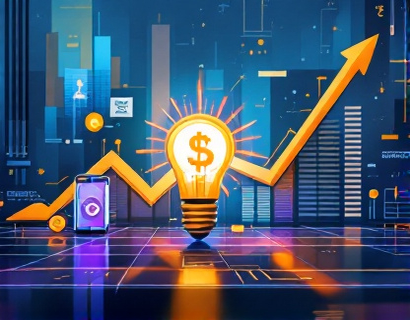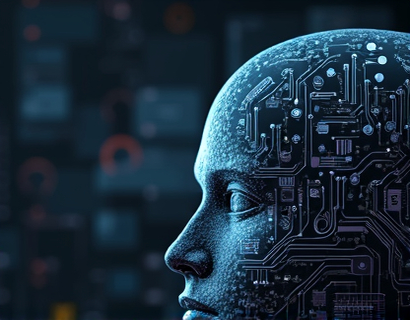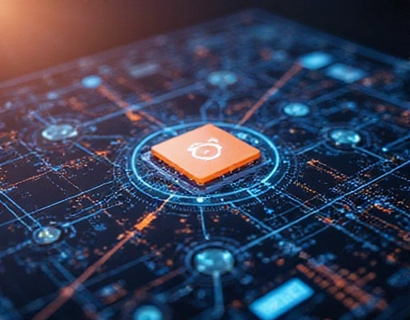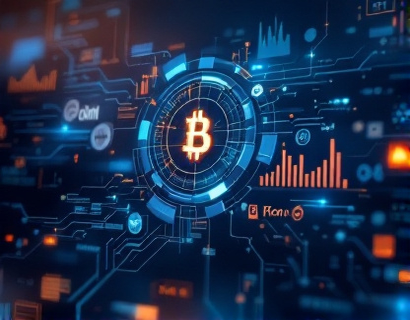Revolutionizing Digital Asset Management: The Power of Decentralized dApps for Cross-Blockchain Conversion
The landscape of blockchain technology is rapidly evolving, presenting both opportunities and challenges for professionals and enthusiasts alike. One of the most significant hurdles in the adoption and utility of blockchain solutions is the issue of interoperability between different blockchains. Digital assets created on one blockchain often remain confined to that ecosystem, limiting their potential and utility. This is where the transformative power of decentralized applications, or dApps, comes into play, particularly in streamlining the cross-blockchain conversion of digital assets. This article delves into the intricacies of how a cutting-edge decentralized application can revolutionize the way we manage and convert digital assets across multiple blockchains, offering unparalleled compatibility and efficiency.
Understanding the Need for Cross-Blockchain Asset Conversion
The blockchain ecosystem is fragmented, with numerous platforms each having its own set of rules, protocols, and digital currencies. This fragmentation, while fostering innovation, also creates silos that hinder the seamless transfer of digital assets. For instance, an asset created on Ethereum cannot directly interact with a smart contract on Binance Smart Chain or Polkadot without undergoing a conversion process. This limitation not only restricts the fluidity of digital assets but also diminishes the overall value and utility of these assets. The need for a solution that can bridge these gaps and enable seamless cross-blockchain asset conversion is more pressing than ever.
Introducing Decentralized dApps for Asset Conversion
Decentralized dApps are emerging as the ideal solution to this problem. These applications leverage blockchain technology to operate without a central authority, ensuring transparency, security, and decentralization. In the context of cross-blockchain asset conversion, a decentralized dApp can serve as a universal bridge, allowing users to convert their digital assets from one blockchain to another with ease and efficiency. This approach not only enhances the interoperability of blockchain networks but also empowers users to fully leverage the potential of their digital assets across different ecosystems.
Key Features of a Decentralized Asset Conversion dApp
A well-designed decentralized dApp for cross-blockchain asset conversion must incorporate several key features to ensure seamless and secure operations. First and foremost, the dApp should support a wide range of blockchains, enabling users to convert assets between virtually any pair of blockchains. This requires robust protocol integration and a comprehensive database of blockchain-specific parameters and requirements.
Another critical feature is the user-friendly interface. Despite the complexity of the underlying technology, the dApp should be accessible to both technical and non-technical users. This involves intuitive navigation, clear instructions, and real-time feedback to guide users through the conversion process. Additionally, the dApp should prioritize security, employing advanced cryptographic techniques and multi-signature wallets to protect user assets during the conversion process.
Efficiency is also paramount. The dApp should minimize transaction fees and processing times, making the conversion process as cost-effective and quick as possible. This can be achieved through optimized smart contracts and leveraging layer 2 solutions to reduce the load on the main blockchain networks. Furthermore, the dApp should offer real-time tracking and notifications, allowing users to monitor the status of their asset conversions at every stage.
Technical Underpinnings of Cross-Blockchain Conversion
At the core of a decentralized dApp for cross-blockchain asset conversion lies a sophisticated set of technical components. The first step involves the creation of a multi-chain asset wallet, which can hold and manage digital assets from various blockchains. This wallet acts as the central hub for asset conversion, ensuring that assets are securely stored and easily accessible for conversion.
The conversion process itself is facilitated by smart contracts, which are self-executing contracts with the terms of the agreement directly written into code. These smart contracts are deployed on the source blockchain to initiate the conversion process. They handle the necessary transactions, ensuring that the asset is locked on the source chain and a corresponding asset is minted on the target blockchain. The smart contracts must be carefully designed to account for the unique characteristics of each blockchain, such as gas fees, block times, and contract syntax.
Interoperability protocols play a crucial role in enabling communication between different blockchains. Protocols like Polkadot's XCMP (Cross-Chain Message Passing) and Cosmos' IBC (Inter-Blockchain Communication) allow for seamless data and asset transfer between chains. The dApp integrates these protocols to ensure smooth and secure asset conversion, regardless of the blockchains involved. Additionally, the dApp may utilize oracle services to fetch real-time data from different blockchains, ensuring that the conversion process is based on the most up-to-date information.
Benefits of Using a Decentralized Asset Conversion dApp
The adoption of a decentralized dApp for cross-blockchain asset conversion offers numerous benefits to users. One of the most significant advantages is the enhanced interoperability of blockchain networks. By breaking down the silos created by different blockchains, users can freely move their assets across ecosystems, unlocking new opportunities for investment, collaboration, and innovation.
Efficiency is another major benefit. Traditional methods of cross-blockchain asset conversion often involve multiple intermediaries, each taking a cut in the form of fees. A decentralized dApp eliminates the need for these intermediaries, reducing transaction costs and speeding up the conversion process. Users can convert their assets quickly and at a fraction of the cost, making blockchain technology more accessible and practical for a wider audience.
Security is also significantly improved with a decentralized dApp. Since the process is managed through smart contracts and decentralized protocols, there is no single point of failure. This distributed approach enhances the overall security of the conversion process, protecting user assets from fraud and hacking attempts. Moreover, the transparency of blockchain technology ensures that all transactions are publicly verifiable, adding an extra layer of trust and reliability.
Case Studies and Real-World Applications
To better understand the practical implications of a decentralized dApp for cross-blockchain asset conversion, let's explore a few hypothetical scenarios. Imagine a digital asset manager who holds a portfolio spread across Ethereum, Binance Smart Chain, and Solana. Using a decentralized dApp, this manager can seamlessly convert Ethereum ERC-20 tokens to Binance Smart Chain BEP-20 tokens and further to Solana SLP tokens, all within a single interface. This not only simplifies asset management but also optimizes the use of each blockchain's unique features and incentives.
Another scenario involves a developer creating a decentralized application that requires assets from multiple blockchains. Instead of locking assets in each blockchain's native wallet, the developer can use the dApp to convert and integrate these assets into a unified wallet. This streamlines the development process and ensures that the application can interact with a broader range of decentralized services and protocols.
These examples illustrate the practical value of a decentralized dApp in enhancing the flexibility and utility of digital assets. By removing the barriers of cross-blockchain conversion, users can fully harness the potential of the blockchain ecosystem.
Challenges and Future Developments
While the potential of decentralized dApps for cross-blockchain asset conversion is immense, there are still challenges to overcome. One of the primary challenges is the technical complexity involved in integrating multiple blockchains and ensuring seamless interoperability. Each blockchain has its own set of rules and protocols, and creating a universal solution requires extensive research and development.
Another challenge is the regulatory landscape. As blockchain technology continues to evolve, regulatory frameworks are still catching up. Decentralized dApps must navigate these regulations carefully to ensure compliance while maintaining their decentralized nature. This requires close collaboration with legal experts and regulatory bodies to create a balanced and supportive environment for innovation.
Looking ahead, the future of decentralized dApps for cross-blockchain asset conversion is promising. Advancements in blockchain technology, such as the development of more scalable and efficient blockchains, will further enhance the capabilities of these dApps. The rise of layer 2 solutions and cross-chain bridges will also play a crucial role in reducing transaction costs and increasing processing speeds. Additionally, the growing adoption of decentralized finance (DeFi) and non-fungible tokens (NFTs) will create new use cases and demand for cross-blockchain asset conversion services.
As the ecosystem matures, we can expect to see more user-friendly and feature-rich dApps emerge, catering to a broader range of users and use cases. The collaboration between developers, blockchain projects, and regulatory bodies will be key to overcoming the remaining challenges and realizing the full potential of decentralized asset conversion.
Conclusion
In conclusion, decentralized dApps are poised to revolutionize the way we manage and convert digital assets across different blockchains. By offering seamless, secure, and efficient cross-blockchain conversion, these applications break down the barriers that have long hindered the full utilization of blockchain technology. For blockchain professionals and enthusiasts, embracing this technology means unlocking new possibilities and driving the next wave of innovation in the digital asset space. As the ecosystem continues to evolve, the role of decentralized dApps in shaping a more interconnected and efficient blockchain world cannot be overstated.











































